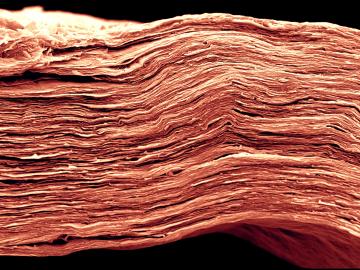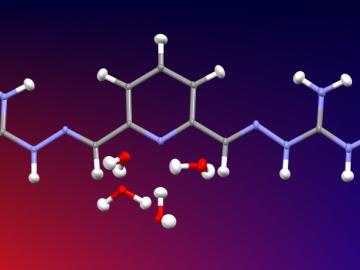
Filter News
Area of Research
- (-) Materials (65)
- (-) National Security (20)
- Advanced Manufacturing (2)
- Biology and Environment (44)
- Computational Biology (1)
- Computational Engineering (3)
- Computer Science (8)
- Electricity and Smart Grid (1)
- Energy Science (118)
- Energy Sciences (1)
- Fusion and Fission (13)
- Fusion Energy (9)
- Isotopes (5)
- Materials for Computing (8)
- Mathematics (1)
- Neutron Science (67)
- Nuclear Science and Technology (7)
- Quantum information Science (2)
- Sensors and Controls (2)
- Supercomputing (39)
- Transportation Systems (2)
News Type
News Topics
- (-) Big Data (2)
- (-) Biomedical (5)
- (-) Cybersecurity (12)
- (-) Energy Storage (27)
- (-) Environment (10)
- (-) Fusion (5)
- (-) Grid (5)
- (-) Neutron Science (23)
- (-) Security (6)
- (-) Transportation (12)
- 3-D Printing/Advanced Manufacturing (20)
- Advanced Reactors (3)
- Artificial Intelligence (10)
- Bioenergy (10)
- Biology (5)
- Buildings (3)
- Chemical Sciences (24)
- Clean Water (1)
- Composites (7)
- Computer Science (17)
- Coronavirus (4)
- Critical Materials (13)
- Exascale Computing (1)
- Frontier (2)
- High-Performance Computing (3)
- Isotopes (7)
- ITER (1)
- Machine Learning (6)
- Materials (50)
- Materials Science (54)
- Microscopy (18)
- Molten Salt (3)
- Nanotechnology (29)
- National Security (11)
- Nuclear Energy (7)
- Partnerships (11)
- Physics (16)
- Polymers (12)
- Quantum Computing (2)
- Quantum Science (11)
- Space Exploration (1)
- Summit (2)
Media Contacts


OAK RIDGE, Tenn., March 1, 2019—ReactWell, LLC, has licensed a novel waste-to-fuel technology from the Department of Energy’s Oak Ridge National Laboratory to improve energy conversion methods for cleaner, more efficient oil and gas, chemical and

Researchers used neutron scattering at Oak Ridge National Laboratory’s Spallation Neutron Source to investigate the effectiveness of a novel crystallization method to capture carbon dioxide directly from the air.

Gleaning valuable data from social platforms such as Twitter—particularly to map out critical location information during emergencies— has become more effective and efficient thanks to Oak Ridge National Laboratory.

Scientists have tested a novel heat-shielding graphite foam, originally created at Oak Ridge National Laboratory, at Germany’s Wendelstein 7-X stellarator with promising results for use in plasma-facing components of fusion reactors.

Oak Ridge National Laboratory scientists studying fuel cells as a potential alternative to internal combustion engines used sophisticated electron microscopy to investigate the benefits of replacing high-cost platinum with a lower cost, carbon-nitrogen-manganese-based catalyst.

A team of scientists has for the first time measured the elusive weak interaction between protons and neutrons in the nucleus of an atom. They had chosen the simplest nucleus consisting of one neutron and one proton for the study.

Thought leaders from across the maritime community came together at Oak Ridge National Laboratory to explore the emerging new energy landscape for the maritime transportation system during the Ninth Annual Maritime Risk Symposium.

Scientists at the Department of Energy’s Oak Ridge National Laboratory used neutrons, isotopes and simulations to “see” the atomic structure of a saturated solution and found evidence supporting one of two competing hypotheses about how ions come

The Department of Energy’s Oak Ridge National Laboratory is now producing actinium-227 (Ac-227) to meet projected demand for a highly effective cancer drug through a 10-year contract between the U.S. DOE Isotope Program and Bayer.


